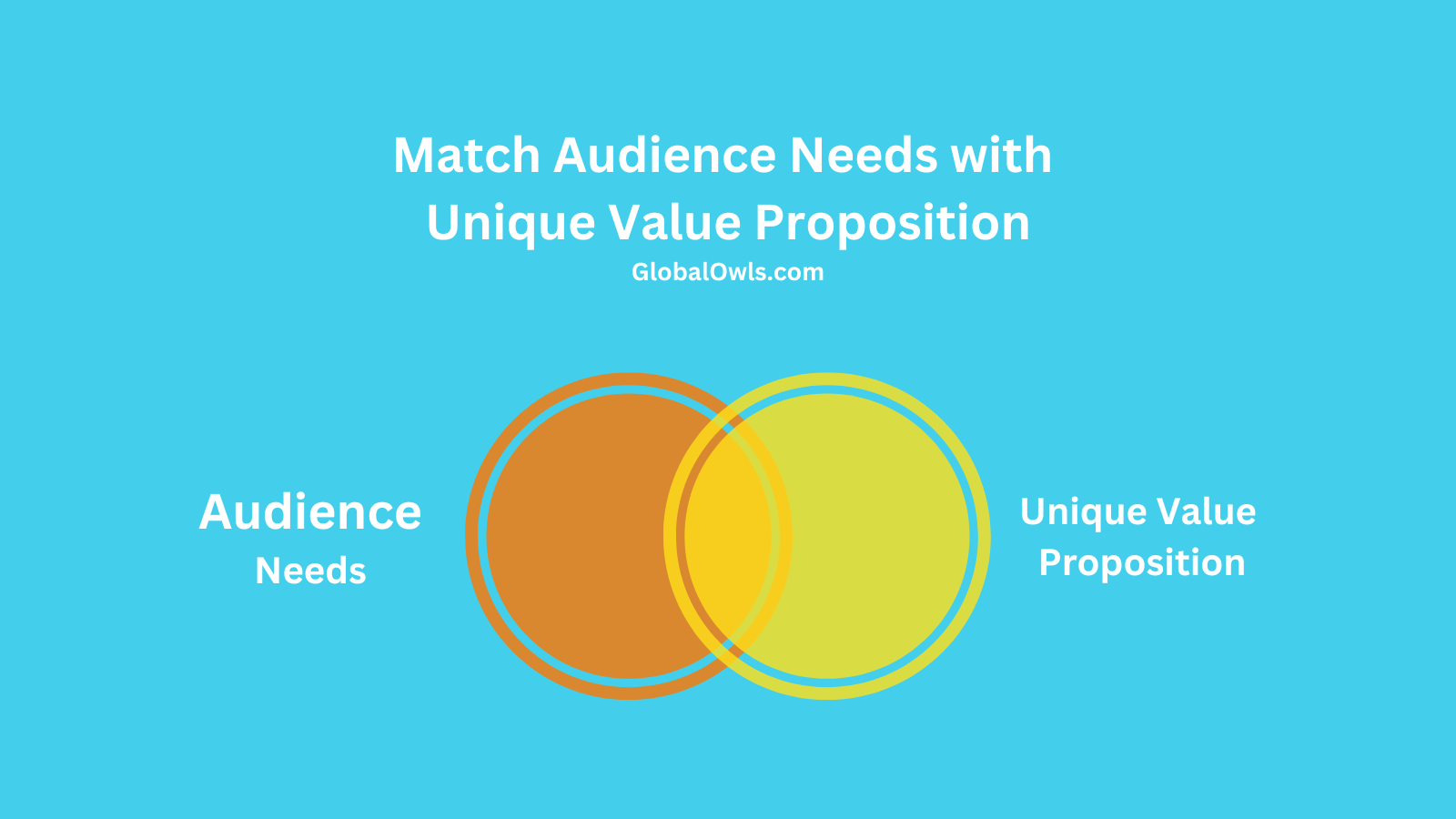How to Set up Your Video Marketing Strategy in 2024
If you’re just starting off on your video marketing journey or if you’ve already been dipping your toes into this amazing channel, setting up or perfecting your Video Marketing Strategy is a must.
If you’re just creating video content because you see something is trending on YouTube, TikTok, Instagram, or other platforms, you’re missing out.
You’ll most likely always be running towards the end of the rainbow to find that golden pot, but you’ll never reach it.
Instead of chasing trends, set up a proper video marketing strategy and become the voice people want to listen to.
Your video marketing strategy can be as simple or complex as you want it to be. The most important thing is understanding what you have to offer, what people need, and how you’re building towards your goals.
Let’s have a look at the most important steps you need to take to set up your video marketing strategy.
Chapters
- 1. Het belang van het kiezen van een publiek voor uw videomarketingstrategie
- 2. Het belang van het definiëren van wat u te bieden heeft voor uw videomarketingstrategie
- 3. Zorg ervoor dat de behoeften van het publiek overeenkomen met uw unieke waardepropositie
- 4. Welke soorten video's wil je maken?
- 5. Stel uw videomarketingdoelen in
- 6. Promoot je video's buiten de platforms waarop je ze hebt gepubliceerd
- Conclusie
1. The Importance of Choosing an Audience for your Video Marketing Strategy

Setting up your video marketing strategy without defining your audience is like setting sail without a compass—you might move forward, but you’re unlikely to reach your desired destination. In the digital age, where content is king and competition fierce, understanding and choosing the right audience for your video content is not just important—it’s crucial. Let’s dive into the pivotal role your audience plays in the success of your video marketing strategy.
Tailored Messaging: By identifying your target audience, you can craft messages that resonate deeply with their needs, interests, and pain points. This tailored approach ensures your content strikes a chord, fostering a stronger connection and response compared to generic, one-size-fits-all content.
Enhanced Engagement: When viewers feel that content speaks directly to them, they’re more likely to engage with it through likes, shares, and comments. This engagement not only boosts your content’s visibility through social algorithms but also builds a community around your brand.
Efficient Resource Use: Knowing your audience allows you to focus your resources—time, budget, and creativity—on producing content that’s most likely to appeal to them. This targeted approach maximizes the return on your investment by avoiding the scattergun approach of trying to appeal to everyone.
Better Conversion Rates: Tailored content that resonates with a specific audience is more likely to inspire action, whether that’s making a purchase, signing up for a newsletter, or following your brand on social media. By speaking directly to their desires and needs, you significantly increase the likelihood of converting viewers into customers.
Strategic Content Distribution: Understanding your audience goes beyond knowing what they like; it’s also about knowing where they spend their time online. This knowledge enables you to strategically distribute your video content across platforms where your audience is most active, ensuring higher visibility and engagement.
Long-term Loyalty Building: When viewers feel consistently understood and valued through content that addresses their specific interests and challenges, they’re more likely to develop loyalty to your brand. This loyalty translates into repeat business, word-of-mouth referrals, and a strong, supportive community.
In the vast sea of online content, the brands that stand out are those that understand their audience intimately and cater to them meticulously. Choosing and understanding your audience is the cornerstone of any successful video marketing strategy, guiding every decision from content creation to distribution.
So, before you press ‘record’, take a moment to consider who’s watching. This foundational step could make all the difference in your video marketing efforts.
2. The Importance of Defining what you have to Offer for your Video Marketing Strategy

Just as a lighthouse guides ships to safe harbor, defining what you have to offer illuminates the path for your video marketing strategy, ensuring it reaches its intended audience with clarity and impact. In the bustling marketplace of ideas and products, standing out requires more than just visibility; it demands a clear message about what makes your offering unique. Here’s why articulating your value proposition is critical in your video marketing journey:
Crystal-Clear Communication: At its core, video marketing is about storytelling. Defining your offering clearly helps you craft narratives that not only captivate but also communicate the essence of what you’re bringing to the table. This clarity ensures that your audience understands your product or service, its benefits, and why it matters to them.
Targeted Messaging: Knowing exactly what you have to offer enables you to tailor your messaging to resonate with your specific audience. It allows you to highlight the features and benefits that are most relevant to their needs and desires, creating a more personalized and compelling marketing experience.
Differentiation in a Crowded Market: In a digital sea of competitors, your unique value proposition is your beacon. By defining and communicating what sets you apart, your video content helps potential customers understand why they should choose you over others. This differentiation is key to capturing attention and fostering brand preference.
Strategic Content Creation: With a clear understanding of your offering, you can strategically plan your video content to showcase your strengths. Whether it’s highlighting innovative features, demonstrating your product in action, or sharing customer success stories, your content will be more focused and effective.
Emotional Connection: Videos have the power to evoke emotions and create connections. By defining what you offer, you can craft stories that not just sell a product or service, but also convey values and emotions that align with your audience’s identity. This emotional resonance is what transforms viewers into loyal fans and customers.
Efficiency and ROI: A well-defined offering helps streamline your content production process, focusing your efforts on videos that clearly communicate your value. This efficiency not only saves time and resources but also enhances the return on investment of your marketing campaigns by driving more targeted and effective engagements.
Guiding Conversion Strategy: Knowing your offering inside and out aids in creating a clear call-to-action (CTA) for your videos. Whether it’s signing up, making a purchase, or another step, a defined offering guides your audience on what to do next, making the journey from viewer to customer smooth and intuitive.
Defining what you have to offer is the cornerstone of any successful video marketing strategy. It informs every aspect of your content, from creation to distribution, ensuring that every piece of content serves a purpose and moves you closer to your goals. By shining a light on your unique value, you not only guide your audience through the cluttered digital landscape but also pave the way for deeper connections and sustained business growth. Remember, in the story of your brand, clarity is the hero.
3. Match Audience Needs with your Unique Value Proposition

The magic happens when you not only understand your audience’s needs or what you have to offer but also how those two overlap and therefore can offer something amazing that only you can offer.
For GlobalOwls:
We know that there are a lot of content creators who want to succeed with video marketing and are trying to find ways to grow. We are in a great position where we’ve been doing Growth Marketing, SEO, Social Media Marketing for a long time and are now also trying ti figure out what the best ways are to grow with video. We share our learnings, successes, and failures to help our audience.
What is your story?
Write it down. Add it to your Video Marketing Strategy.
4. What types of videos do you want to create?

Now that you know what you want to do, the question is; how are you going to do it?
There are many types of videos you can create. You can create long-form, short-form videos. You can create videos for YouTube, for TikTok, for Instagram, you name it. Think about the video types you want to create first and start with that.
Later, add new video types to your video marketing strategy so you can experiment and learn.
Here are just a couple of video types you could start with:
Marketers have a plethora of video types at their disposal, each with its unique ability to engage, inform, and convert audiences. In today’s digital-first world, where video content reigns supreme, selecting the right types of videos is crucial for a successful marketing strategy. Here are essential video types that marketers should consider creating:
Explainer Videos: These short, engaging videos explain your product or service in a simple and effective way, often using animation to break down complex ideas into digestible bits. They’re perfect for introducing your brand to new customers.
Product Demos: Showcase how your product works, its features, and its benefits. Product demos help potential customers visualize themselves using the product, increasing the likelihood of purchase.
Customer Testimonials: Authentic reviews from satisfied customers build trust and credibility. Testimonial videos are powerful because they offer real-world proof of your product or service’s value.
How-to Videos/Tutorials: Educate your audience by providing valuable information on how to use your product or solve problems related to your industry. This positions your brand as a helpful resource and authority.
Brand Stories: Share your brand’s mission, vision, and values through storytelling. These videos connect emotionally with viewers, fostering a deeper brand-customer relationship.
Social Media Videos: Short, attention-grabbing videos tailored for social platforms can boost engagement, increase shares, and drive traffic. They’re great for reaching a wider audience with bite-sized content.
Live Streams: Engage with your audience in real-time through Q&As, behind-the-scenes looks, or live coverage of events. Live streaming adds a layer of authenticity and immediacy that pre-recorded videos can’t match.
Webinars: Offer in-depth knowledge on topics relevant to your audience. Webinars are excellent for lead generation and positioning your brand as an industry thought leader.
User-Generated Content: Encourage your customers to share their own videos using your product. This type of content is authentic and can significantly influence buying decisions.
Case Studies and Success Stories: Dive deep into how your product or service has helped solve specific problems. These videos can effectively demonstrate your value proposition in action.
Animated Videos: Use animation to tell stories, explain complex services, or bring data to life. Animated videos are versatile and can make even the driest subject matter engaging.
360° and Virtual Reality Videos: Offer an immersive experience that allows viewers to control their perspective. These are great for virtual tours, product demos, or creating an immersive brand experience.
Each video type serves a different purpose and fits into various stages of the customer journey. By mixing and matching these video types based on your marketing goals and audience preferences, you can create a robust video marketing strategy that engages, educates, and converts. Remember, the key is not just to create videos, but to craft stories that resonate with your audience, leaving a lasting impact.
5. Set up your Video Marketing Goals

Diving into the world of video marketing is an exhilarating journey! However, to approach it with grounded expectations. Aiming for your first few videos to instantly go viral on platforms like YouTube, TikTok, or Instagram might not be the most practical initial goal.
Instead, we recommend a different strategy.
Recognize the potency of video as a marketing tool and acknowledge the learning curve involved in kickstarting or advancing your video marketing initiatives. With so much to explore and experiment with, setting goals based solely on outcomes can be like shooting arrows in the dark.
Focus on input-based goals instead. Ask yourself: How committed are you to succeeding in video marketing? Assess the amount of time and budget you can dedicate weekly to crafting videos and honing your skills.
After dedicating effort and creating a portfolio of at least 50 videos, take a moment to evaluate your skills, identify areas for improvement, understand the initial results, and then, you’re in a better position to establish outcome-based goals, such as increasing your subscriber count, boosting views, or even getting sales.
6. Promote your videos outside of the platforms you’ve published them on

Add to your video marketing strategy your tactics for promoting your videos outside of the platforms you’ve published them on.
Are you only going to publish your videos on YouTube or are you going to use social media to promote the videos? There are many channels you can use to give your videos a boost. At GlobalOwls, our strongest channel is our website. For almost every video we publish on YouTube, we also create a blog post to give the video extra visibility and of course we also share it on social media.
Conclusion
Setting up your Video Marketing strategy does not have to be difficult. You can make it as short or detailed as you’d like. But understanding why you do what you do and for whom is essential. Later, you can add tactics and experiment along the way.
GlobalOwls Empowers you to become the best version of yourself
Check out the following resources and Grow!